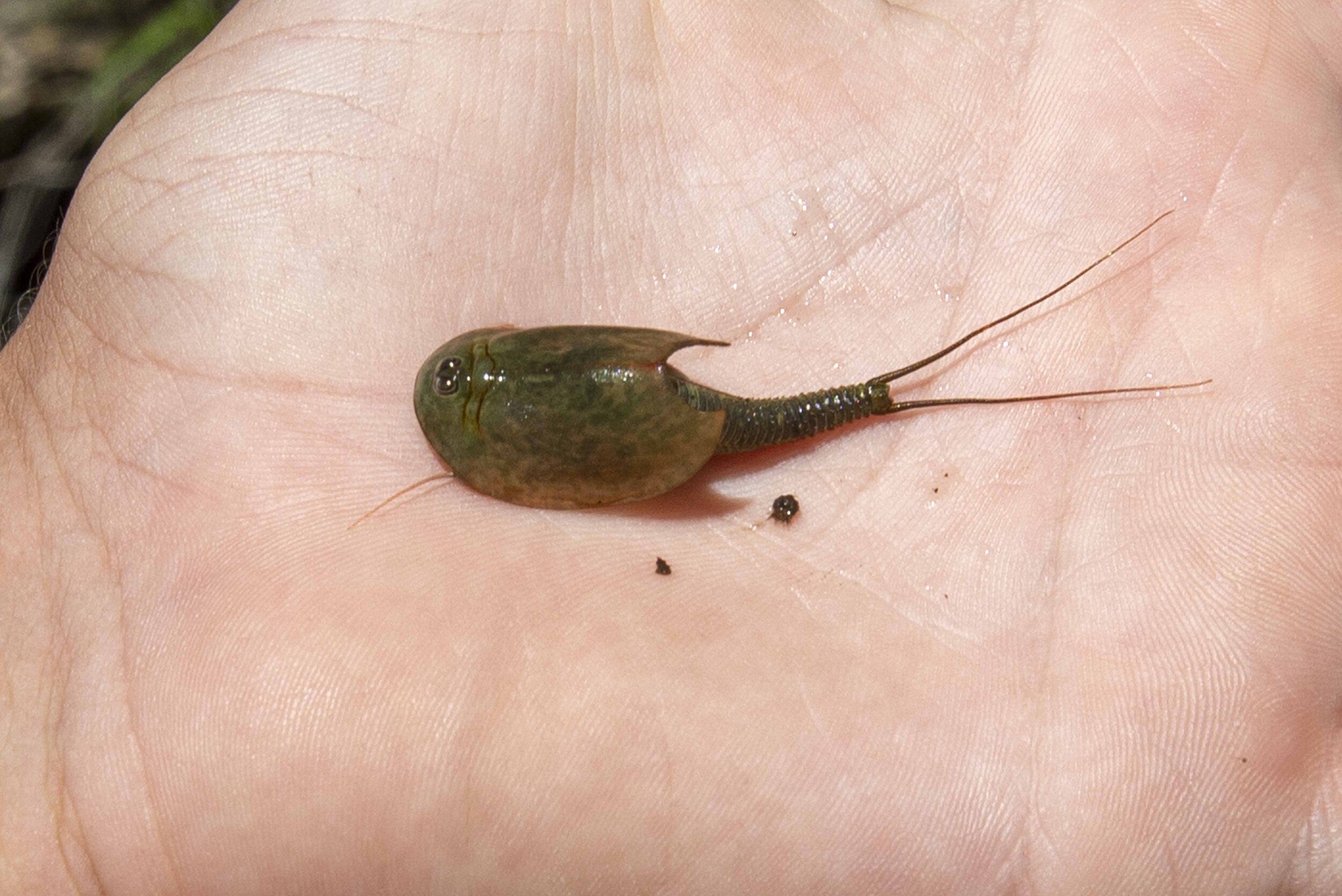Shield Shrimps in N’Dhala Gorge
Triops australiensis, Shield Shrimp
Shield Shrimps (Triops australiensis)
As we walked up N’Dhala Gorge looking for petroglyphs we are forced to hop over the full ponds that line the gorge floor. The wet season has been exceptional following several years of poor rain. As we walk past the ponds large black clouds of tadpoles darting back and forth catch our attention. We take a closer look and find another intriguing pond dweller. A little creature around six to nine cm long that resembles a miniature version of a horseshoe crab scrambles around in the shallows.
This is Triops australiensis more commonly know as the shield shrimp or tadpole shrimp a very unique creature well adapted to surviving in areas with sporadic rainfall. They belong to the class, branchiopods, literally meaning they possess “gill feet” that enable them to breathe underwater. These versatile legs of which there are about 60 are not only used for breathing but also to swim and scurry about as well as to carry their tiny eggs. The name Triops points to another feature of this creature namely its three eyes located on the rostral dorsal surface of the shield-like carapace. Stretching out behind the carapace is a long-segmented body that ends in two thin forks.
How do they survive in the harsh dry environment with its sporadic rainfall that makes up most of the central region of Australia? Their most unique mode of survival is their eggs that can lay dormant for decades even when exposed to extreme temperatures, drought, and radiation. Expose these eggs to water and they will hatch and then within two days the larvae transform into adults that can mate and produce eggs within two weeks. They will eat anything, a true omnivore, to ensure they grow and produce eggs in the short periods that the ponds have water. The eggs drop to the bottom of the pond and need to undergo a period of drying out before they will hatch. This provides the opportunity for dispersal via wind, or aquatic birds and animals and has ensured that they are found over most of Australia.
Are you fascinated? Would you like a closer look?
You’re in luck! These creatures are for sale from a large number of outlets. As the eggs are so resistant, they can be posted to almost anywhere. Once you have the eggs simply add water place them in a suitable environment and watch them grow. At the end of their life cycle dry the sand at the bottom of the pond for a short period, add water and start the process afresh.









